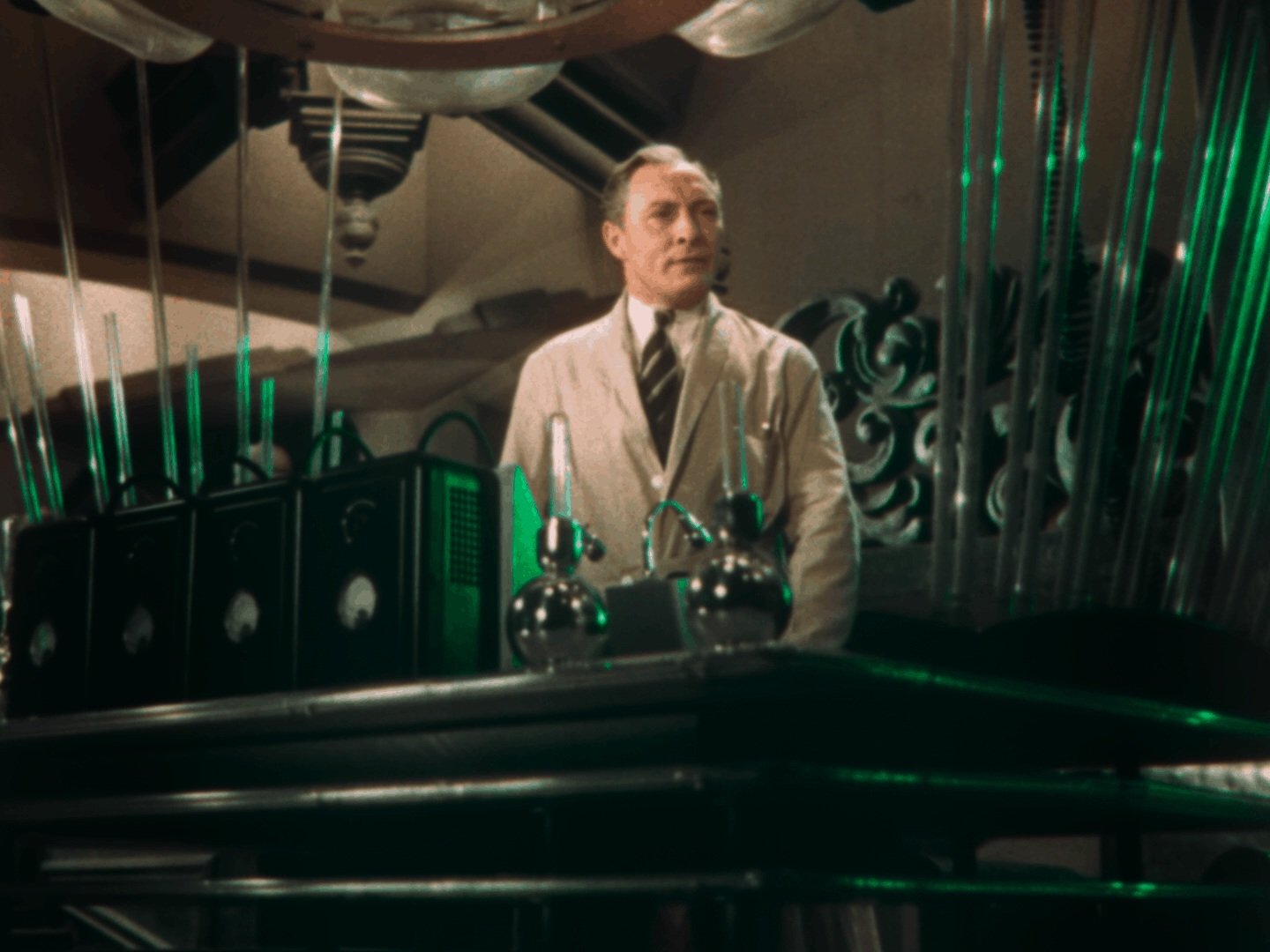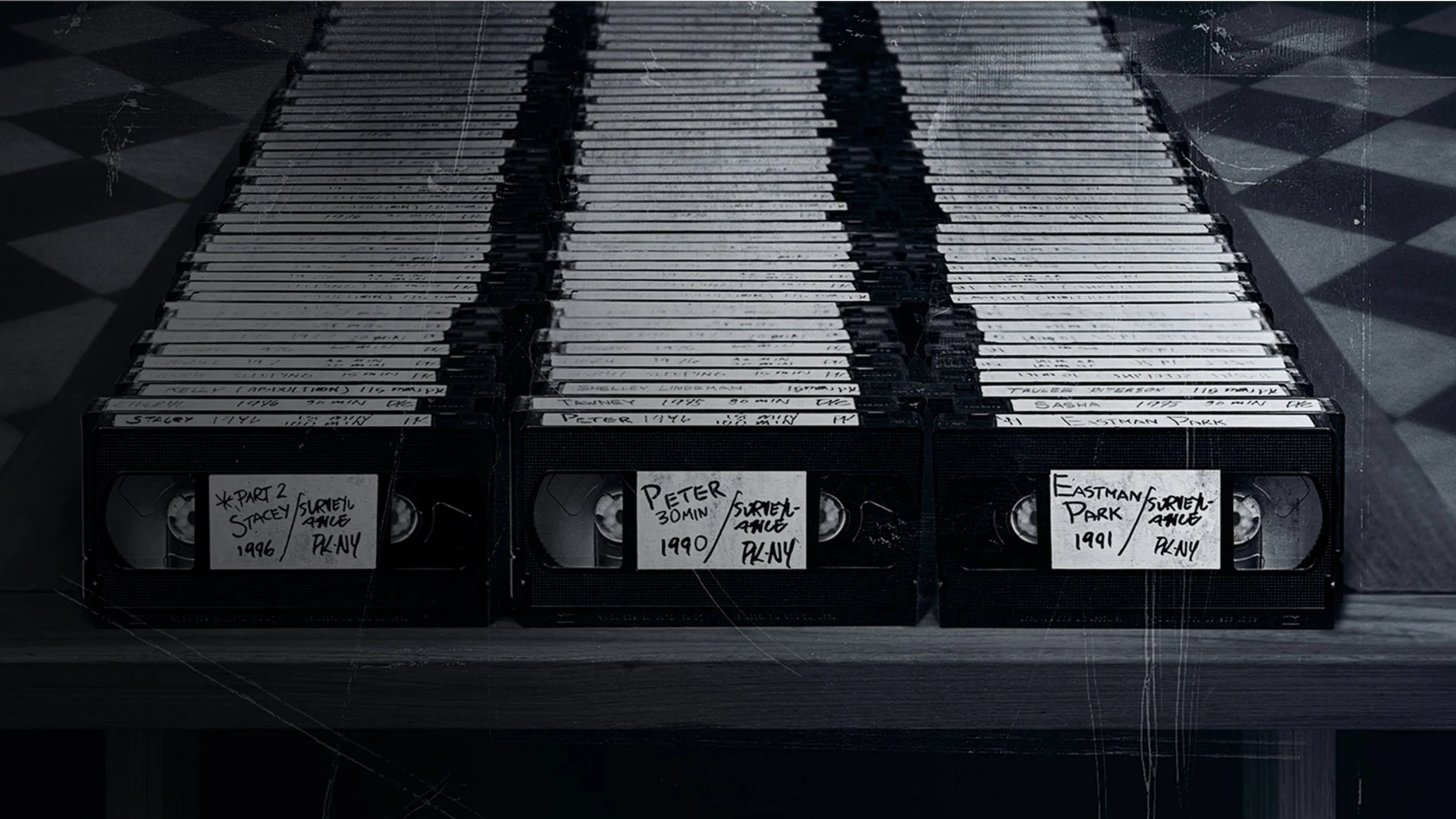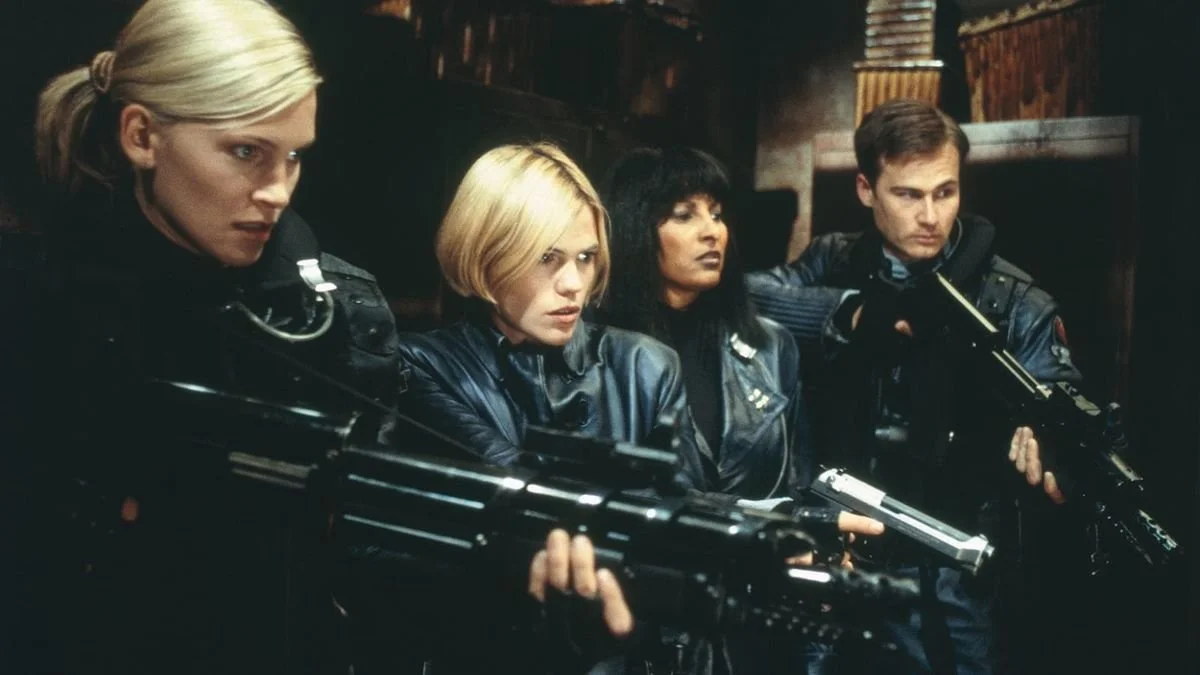Halloween Horror: Doctor X (1932)
Doctor X is a great example of all the strange things you’ll find in a pre-Code horror movie. It’s a serial killer horror story that deals with experimentation, cannibalism, and gruesome murders in a creepy laboratory. It’s directed by Michael Curtiz, who is best known today for directing Casablanca and The Adventures of Robin Hood. It’s interesting to watch Curtiz in horror mode, playing up the Grand-guignol of the bizarre lab contraptions and monstrous actions of the villain.
Doctor X is also noteworthy for being one of the rare films from the early 1930s with colour—two-strip Technicolor in this case, where reds and greens are the dominant hues. The early colour processing gives the entire film an eerie green palette, which is fitting for such a sickly film filled with corpses, experiments, and grotesque happenings in a laboratory.
The plot is a simple whodunnit. A series of grisly murders have occurred during full moons in New York City. Pieces of all the victims have been eaten and mutilated, with eye witnesses all describing the killer as a monstrous figure. The police and a scrappy reporter, Lee Taylor (Lee Tracy), track the murder weapon to a facility run by Doctor Xavier (Lionel Atwill). One of the scientists working at the lab, who the cops discover are experts in surgery and researchers on cannibalistic practices, must be the killer. But which doctor is it? And will the police catch the killer before Doctor Xavier’s beautiful daughter, Joanne (King Kong’s Fay Wray), falls victim?
The drama has that familiarly creaky quality of many films from the early 1930s, when talking pictures were borrowing conventions from the theatre as they figured out how to deliver spoken dialogue on screen. For instance, dialogue scenes are often shot in wide coverage, characters have lots of dramatic pauses, and there’s little to no musical score to underscore the dialogue. This isn’t a negative quality, but simply something that makes Doctor X of its time.
Luckily, however, the film doesn’t retain its serious dramatic approach throughout. Rather, at moments it becomes truly unhinged, such as during two scenes where Doctor Xavier tests the other doctors (and himself) to force the killer to strike. Xavier wires every doctor and records their heart rates. He then has his servants carry out a reenactment of the murders, which will spike the blood pressure of the real killer. Curtiz and his fellow filmmakers delight in showcasing the elaborate contraptions in the lab, with their pulsating electricity and spooky green glow. The editing becomes quicker and the framing more exact, cutting to characters in the centre of the frame and alternating close-ups to heighten the tension.
It all explodes in a moment of heinous violence, which of course it does. Why else build all the tension? The scene also undoubtedly influenced the famous blood test scene of John Carpenter’s The Thing. Watching the doctors, handcuffed to their chairs, flailing and struggling to get free before being murdered by the killer brings to mind the squirming, struggling, tied up suspects of Carpenter’s film.
Doctor X is not particularly scary by modern standards, but the subject matter and the execution are fascinating and unexpected from our 21st-century perspective. It’s a compelling example of how early Hollywood cinema was far more perverse and complex than is often credited by misguided modern assumptions.
7 out of 10
Doctor X (1932, USA)
Directed by Michael Curtiz; written by Robert Tasker and Earl Baldwin, based on the play Terror by Howard W. Comstock; starring Lionel Atwill, Fay Wray, Lee Tracy, Preston Foster.



Kiyoshi Kurosawa’s 2001 J-horror film predicted the new millennium in terrifying ways.